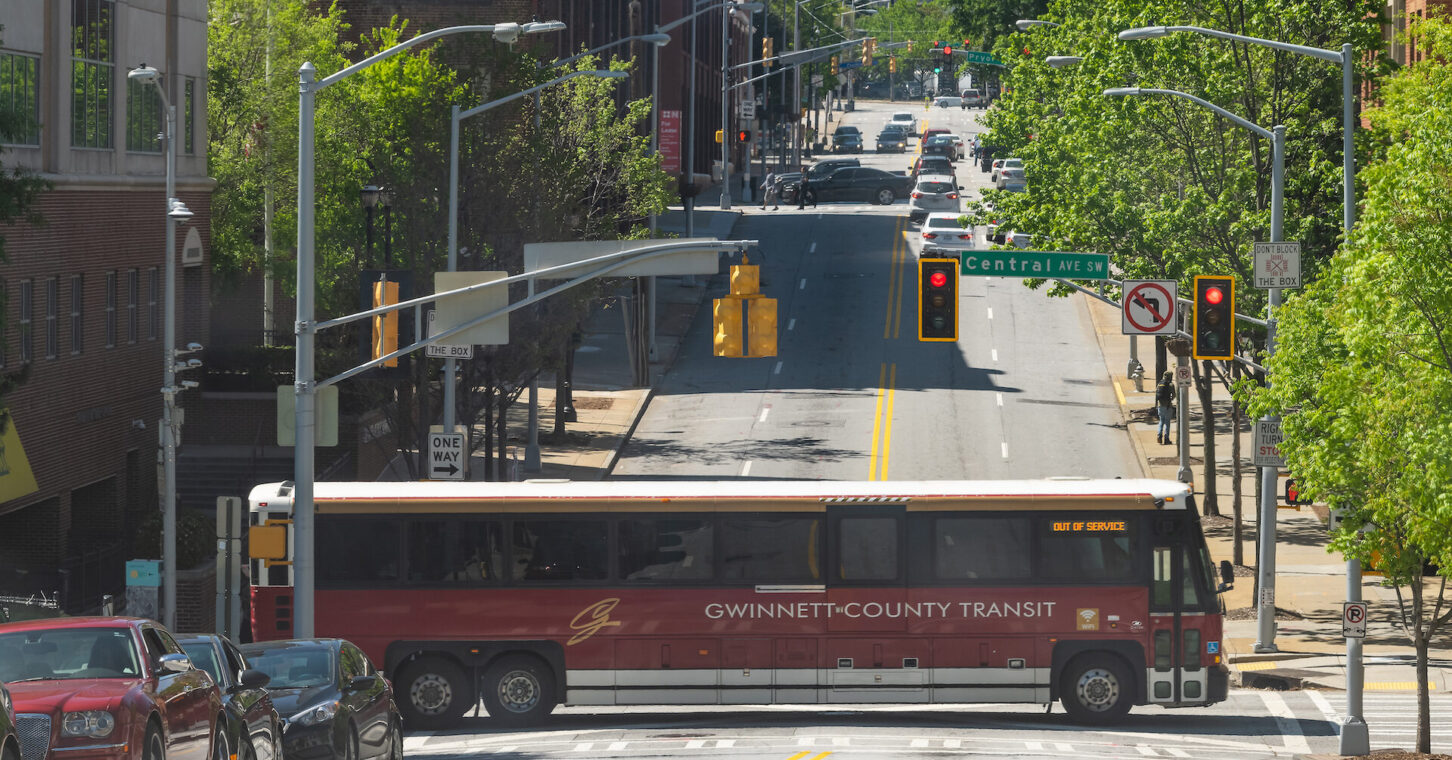
When Gwinnett County voters head to the polls on November 5 they will be asked to approve a new one-cent sales tax to expand transit service in the county.
If residents vote yes on the tax, the county will implement the transit development plan that it has been working on for the past year. If the sales tax produces extra revenue, the county would implement the aspirational parts of the plan.
Thus far, Gwinnett County residents have rejected paying a one-cent sales tax to expand transit service in four separate votes. The first two were in 1971 and 1990 when MARTA was first built and then expanded. Referenda failed again in 2019 after politicians thought a more populated, diverse county might embrace MARTA, and again in 2020 when the county would have run the bus and paratransit service components but MARTA would have built and operated a heavy rail extension from Doraville.
A common theme in the four defeats was the presence of MARTA. Many county residents opposed the rail line with its unionized workforce and high costs. That opposition cut across race, age, income, and ideological lines.
Judging from the latest proposal, the fifth time might finally be the charm. First, Gwinnett leaders jettisoned MARTA and rail. Most parts of Gwinnett don’t have the population or employment density for rail.
In its place Gwinnett chose two types of Bus Rapid Transit (BRT). BRT is a technology more similar to MARTA heavy rail than to existing bus service. Typically, BRT lines have six features that traditional bus services do not have: priority in travel lanes, unique station design, larger vehicles, off-board fare collection, intelligent transportation systems, and more frequent service.
The plan proposes one line, in the west-central part of the county, for BRT heavy, a version of BRT that operates on its own right-of-way. It proposes eight lines (115 miles) of BRT lite, which has most of the features of BRT heavy, but without the dedicated right-of-way. That dedicated right-of-way is extremely expensive because transit customers must also pay for its construction and maintenance. In contrast, drivers pay for the shared lane that BRT lite operates on. Gwinnett’s transit plan is focused on BRT lite and is thus able to spend a lot more on other transit components.
One of those components is local bus service, which is the backbone of any transit system. Local bus service has stops every 1/8th mile or less. Gwinnett plans to operate its buses 12-18 hours a day, seven days a week, with 15-30-minute headways (the time between buses). The county plans to add 11 routes during the first 10 years, totaling 346 miles.
The county is also planning two direct connectors to Atlanta’s Hartsfield-Jackson International Airport from the northern and southern parts of the county. These will function as (non-stop) express bus services that transport residents from one origin to one destination many miles away. The buses will provide an alternative to driving. These park-and-ride options will also allow residents to save time looking for parking. (The airport is rebuilding its parking garages over the next 20 years and some facilities will be closed during construction).
The plan also creates 27 shared-ride microtransit zones. Microtransit is a flexible on-demand service that will serve the entire county. Instead of buses it uses mini-buses, vans, or rideshare vehicles. Microtransit is the fastest growing transit service in the country.
Microtransit is a good fit for areas of the county that do not have the density for fixed-route transit. It also provides first- and last-mile service to planned bus transit services. These additional zones build on the successful shared-ride zones in use today.
The plan also has an aspirational component if additional funding were to be found. This aspirational component consists of two local bus routes, two BRT lite routes, and 13 express bus routes that serve regional purposes. Each of these appears to be a high-quality, low-cost service.
The proposal does have two minor weaknesses. The first is the lack of express bus service in the plan. Currently, the state (through Xpress) pays for and operates most express bus routes in the county. Gwinnett County operates several routes as well. Given that most Gwinnett County residents still work outside of the county, it might be a better use of resources to add more express bus service and fewer BRT lite projects.
The second is the funding. The county plans to shift the funding source from the general fund to a sales tax. The justification is the sales tax would capture $2.5 billion in revenue from non-residents, which would help the county leverage $3.3 billion in federal dollars, over a 30-year period, for vehicle purposes. While a sales tax would raise additional revenue, it comes with risks. During a recession, the amount of sales tax revenue collected plunges more than other taxes and fees. If Gwinnett County is going to rely on a sales tax, it needs to build a funding reserve during the good times so that it does not need to make major service cuts whenever revenue declines. Further, just because federal dollars are available, it does not mean Gwinnett County will receive all of the funding it expects.
Overall, this is the most cost-effective transit plan, and the one most likely to improve the quality of life of residents of all of the plans that Gwinnett County leaders have proposed. While the heavy reliance on BRT and the switch to a sales tax may not be ideal, the plan is a solid investment for the majority of county residents.